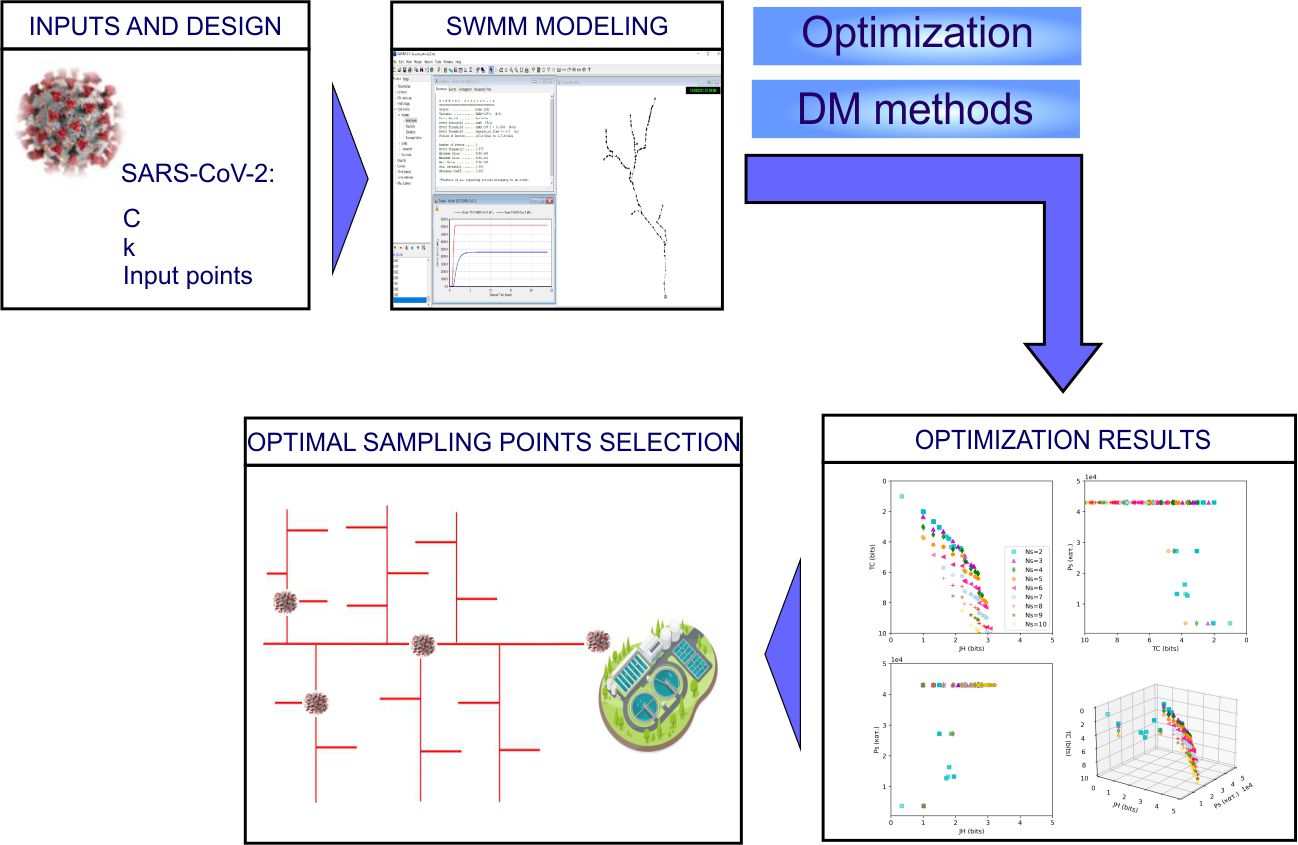
Monitoring wastewater for the presence of SARS-CoV-2 proved to be a useful tool during COVID-19 pandemic and it is in place, until today, at many Wastewater Treatment Plants (WWTPs) in Greece and elsewhere. Identification of virus in wastewater can be a valuable indicator for the early detection of the virus’s upsurges or the evaluation of the disease’s spread. Since this practice might become common in the future, for inspection of SARS-CoV-2 or other viruses, it is important to develop methodologies for identifying the optimum sampling sites, which can provide the most reliable information for the virus’s transmission. In the present study, an optimization procedure is proposed for selecting monitoring points, in terms of number and location across the sewer system. Optimization is based on entropy and total correlation, as well as on supervised population. Four sampling points, well distributed across the sewer system, appear to be a well-balanced solution for wastewater surveillance, while more than seven sampling points do not add significant information content.
Total file downloads: 15